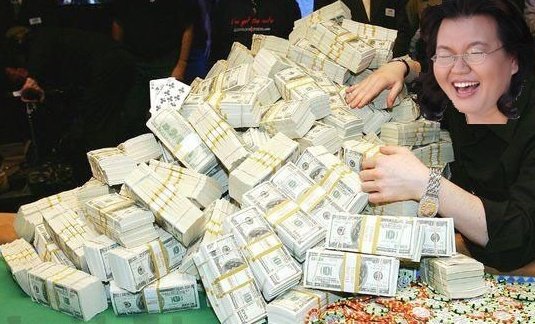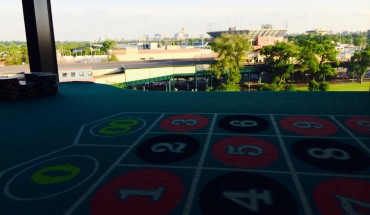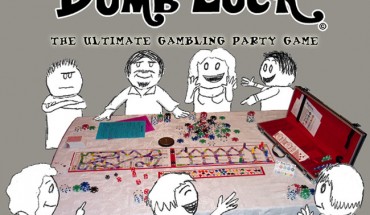I’ve seen this many times.
Players seated at a poker tournament. It’s already an hour or so in and the re-buy period is over.
Blinds are at 1,000 and 2,000.
Nobody makes a play because it’s just way too expensive.
Players are slow bled until they get a hand like a pair of aces and make an “all-in” play.
The all-in is weak, so there are callers.
Aces get cracked, and they’re out of the game.
There are many levels when it comes to playing Texas Holdem, or any no-limit game. It’s not only about what you catch, or reading your opponent, but about your chip stack and weighing your percentages. Having a healthy chip stack, not necessarily the biggest one, can put you in an advantage when going against players who are pulling desperate moves.
There is one major psychological issue that comes into play that needs to be debunked.
It’s not real money.

Photo: Janifer’s head photoshopped over WSOP winner Jamie Gold’s body. He doesn’t know about this picture and she didn’t mention it to him when she dealt to him earlier this year, or his mother, when she dealt to her several years back.
Take a deep breath and read what I wrote. There’s a direct correlation between the exchange of money and pain. Get-out-of-debt gurus such as Dave Ramsey and Suze Orman both preach the use of physical currency over credit cards because the actual exchange of countable currency has been linked to pain, which was documented by the American Psychology Association (click through for the full report). Because of this association, most people, unknowingly, balk when the blinds get to, what they consider to be staggering levels, and guess what? They’re only going to get larger. The balking is an automatic response because most folks in tournament play, cannot differentiate between point value versus money value.
What I mean by this is that 1,000/2,000 blind structure is not dollar per dollar equivalent in a tournament game, although that’s assumed, it’s not the case. At the end of the night, you cannot change that 40,000 worth of chips to $40,000 live money, or anything in that ballpark, unless you are in the money in that tournament, and even then, it’s not points to dollar equivalent.
 You’re playing for points where the value of those points are not equivalent to the number value they are assigned, but the relativity of the bank that’s on the board. For instance, using the 1,000/2,000 blinds example, if the average chip stack on the table is about 100,000 – 200,000, then those blinds are equivalent to .5% – 2% depending on the size of that player’s stack. Generally if the blinds are that far up, there are going to be plenty of people with close to three to five times as much in chips. You might as well consider it a 1 / 2 game and be done with it.
You’re playing for points where the value of those points are not equivalent to the number value they are assigned, but the relativity of the bank that’s on the board. For instance, using the 1,000/2,000 blinds example, if the average chip stack on the table is about 100,000 – 200,000, then those blinds are equivalent to .5% – 2% depending on the size of that player’s stack. Generally if the blinds are that far up, there are going to be plenty of people with close to three to five times as much in chips. You might as well consider it a 1 / 2 game and be done with it.
If you’re still not getting it, think of it this way. Per the US Department of Labor website, the minimum wage in New York State is $8, which equates to $16,640 a year. Now, per a July 2013 Huffington Post article, the average rental price of an apartment in New York City is about $3,000/month, which means that minimum wage earner would only be able to pay for 5 months worth of rent, not eat, and barely have enough for transportation and expenses before they were flat broke. Even in a low end neighborhood, a 1 bedroom apartment goes for, at least, $1,200. Now compare that to Atlanta, Georgia, where the minimum wage is $5.15/hr, which converts to $10,712/year and a one bedroom apartment averages about $798/mo (per ApartmentRatings.com guide). That means that someone earning minimum wage can potentially live in an apartment for 13 months, with $300+ for expenses in that year (I’m exaggerating because with gas, insurance, electricity, food, etc, $300 would not cut it for 1 year). What I’m saying is that in New York, the $1 is worth less than it is in Atlanta, although numerically it’s the same number, because of the associated value, they are not worth the same.
So when you’re at a tournament game, getting sweaty when the blinds get large, don’t freak out. Look at it in terms of ratios rather than numerical value. Then decide whether or not you should call the hand.




1 comment